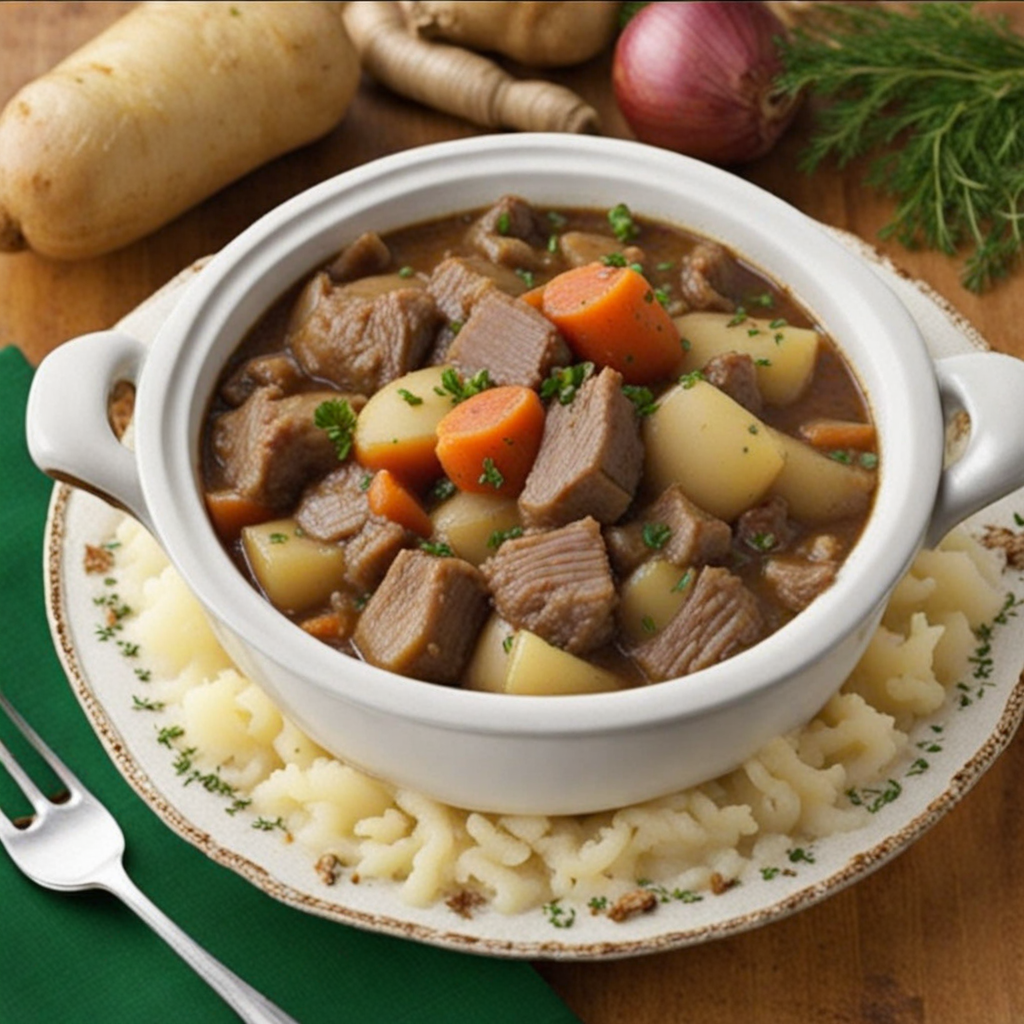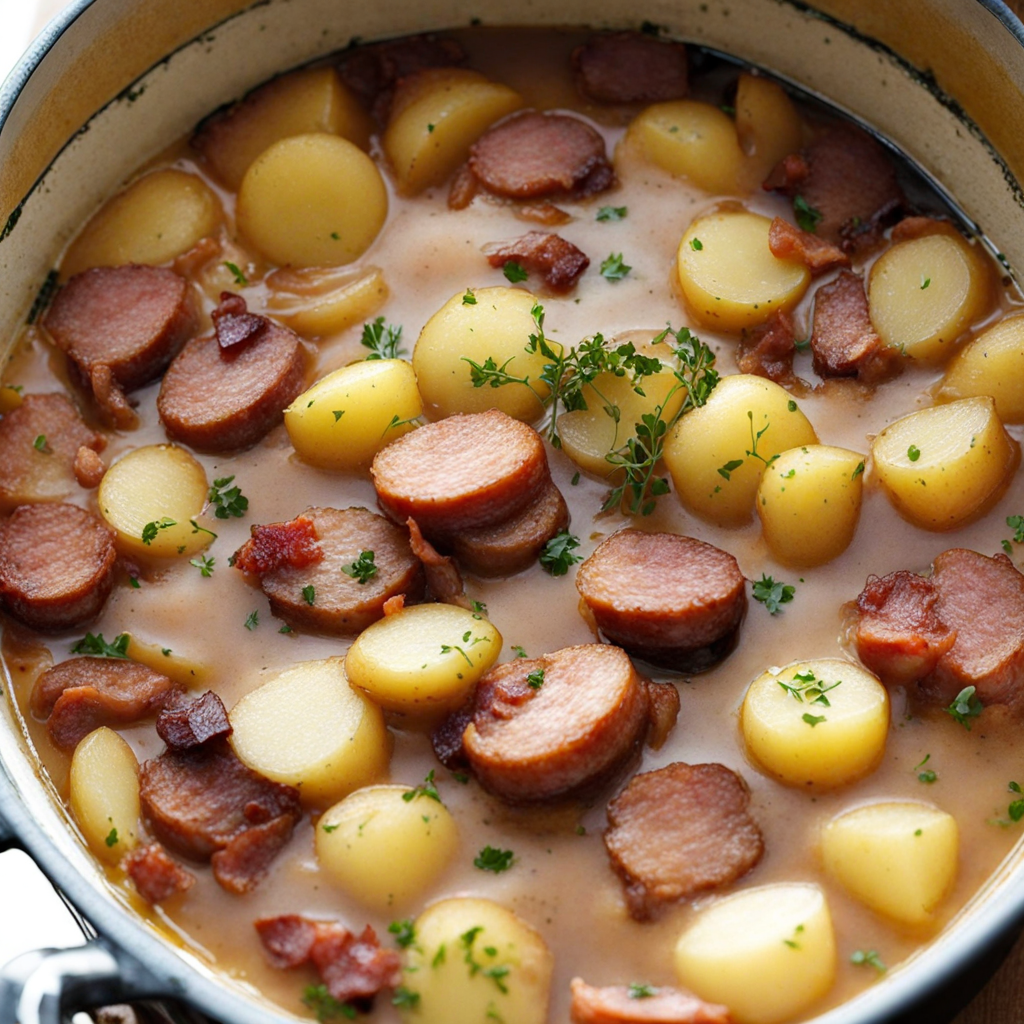Black Pudding
Black pudding is a traditional Irish delicacy that captures the essence of the country’s rich culinary heritage. This unique sausage is made primarily from blood, usually pig's blood, mixed with a variety of ingredients such as fat, oatmeal, and spices. The result is a dense, rich, and slightly grainy texture that offers a complex flavor profile. When cooked, black pudding develops a crispy exterior while remaining soft and flavorful on the inside, making it a versatile addition to many dishes. The taste of black pudding can be described as savory and earthy, with a hint of sweetness from the spices and a robust, meaty undertone. It's often seasoned with ingredients like onion, pepper, and nutmeg, which contribute to its distinctive flavor. Served as part of a traditional Irish breakfast, black pudding is typically accompanied by eggs, sausages, baked beans, and toast, creating a hearty and satisfying meal. Alternatively, it can be enjoyed sliced and pan-fried as a standalone dish or used as an ingredient in various recipes, from salads to gourmet appetizers. For those adventurous enough to try black pudding, the experience is a journey into the heart of Irish culture. It is not only a testament to the resourcefulness of traditional cooking methods but also a reflection of the country’s agricultural practices. Many artisanal producers take pride in crafting their own versions, often using locally sourced ingredients and family recipes passed down through generations. Whether enjoyed in a cozy pub or prepared at home, black pudding offers a unique taste of Ireland that is sure to intrigue and delight the palate.
How It Became This Dish
Origin of Putóg Dhubh Putóg dhubh, or "black pudding," is a traditional Irish dish that has its roots deeply embedded in the agricultural and culinary practices of rural Ireland. The origins of black pudding can be traced back to ancient times when blood was used as a key ingredient in various cultures’ diets, often as a means of preserving food and utilizing all parts of the animal. In Ireland, the practice of making black pudding became particularly popular in the 17th and 18th centuries, coinciding with the rise of pig farming among Irish households. The basic components of Putóg dhubh include fresh pig’s blood, fat (usually from the pig, but sometimes from other animals), oats or barley, and seasonings such as salt, pepper, and sometimes herbs. This combination reflects the resourcefulness of rural communities who made the most of available ingredients. The use of blood not only added a unique flavor profile but also served as an excellent source of nutrition, particularly during times when food scarcity was common. Cultural Significance Putóg dhubh holds a significant place in Irish culture and cuisine. It is not merely a food item but a symbol of communal cooking and family traditions. In many households, the making of black pudding was an event that involved the entire family. After slaughtering the pig, families would gather to prepare the pudding, often sharing stories and laughter during the process. This communal aspect strengthened family bonds and preserved culinary knowledge through generations. Additionally, Putóg dhubh is often associated with specific cultural events and festivals. In regions like County Kerry and County Cork, black pudding is celebrated during local fairs and food festivals, where it is honored not just as a dish but as part of the local heritage. Many Irish pubs feature black pudding on their menus, either as a standalone dish or incorporated into traditional Irish breakfasts, signifying its role in both everyday life and festive occasions. Development Over Time As Ireland underwent social and economic changes, so too did the preparation and consumption of Putóg dhubh. The 19th and 20th centuries brought about significant shifts in Irish society, including urbanization and increased access to diverse food ingredients. While rural communities continued to produce traditional black pudding, the rise of commercial production began to change the landscape. Brands emerged, and recipes were standardized, leading to variations in taste and texture. The black pudding made in artisan butchers' shops often featured local spices and grains, while mass-produced versions relied on consistency and shelf stability. While some purists lamented this shift, many embraced the convenience and accessibility of store-bought black pudding. In contemporary Ireland, Putóg dhubh has experienced a renaissance, with a growing interest in artisanal foods and traditional cooking methods. Chefs and food enthusiasts have sought to revive authentic recipes, often experimenting with unique ingredients while maintaining the traditional preparation methods. This has led to a resurgence of interest in the dish, with culinary festivals dedicated to black pudding and even competitions to determine the best pudding in the country. Regional Variations While Putóg dhubh is recognized nationally, regional variations exist that reflect local ingredients and tastes. For instance, in the west of Ireland, some recipes incorporate seaweed or other coastal ingredients, providing a unique twist to the traditional black pudding. In contrast, the Dublin version may include spices like allspice or nutmeg, adding a different flavor profile. These regional adaptations not only showcase the diversity of Irish cuisine but also highlight the importance of place in food culture. Many local producers take pride in their unique recipes, often passed down through generations, creating a sense of identity linked to their specific region. Modern Interpretations and Global Influence In recent years, Putóg dhubh has transcended its humble origins to gain recognition on the global culinary stage. As the world becomes more interconnected, Irish cuisine—along with its iconic dishes like black pudding—has captured the interest of chefs and food lovers worldwide. Contemporary restaurants, both in Ireland and abroad, are incorporating Putóg dhubh into gourmet dishes, blending it with international flavors and techniques. Additionally, the rise of food tourism has played a crucial role in promoting Putóg dhubh. Visitors to Ireland are increasingly seeking authentic culinary experiences, which has led to the establishment of black pudding tasting tours and workshops. These initiatives not only educate tourists about the history and significance of the dish but also support local producers and artisans. The global popularity of black pudding has also sparked discussions about food ethics and sustainability. As consumers become more conscious of their food choices, there is a growing demand for ethically sourced ingredients. Many modern producers of Putóg dhubh are now emphasizing the importance of ethical farming practices and transparency in their ingredient sourcing, catering to a more discerning clientele. Conclusion: A Dish with a Legacy Putóg dhubh stands as a testament to the rich culinary heritage of Ireland, embodying the resilience and adaptability of its culture. From its humble beginnings as a peasant food to its elevated status in contemporary gastronomy, black pudding has navigated the tides of change while remaining a beloved dish. Its ability to bring people together, celebrate regional diversity, and adapt to modern tastes ensures that Putóg dhubh will continue to be a vital part of Irish cuisine for years to come. As we reflect on the journey of Putóg dhubh, it becomes clear that this black pudding is more than just a dish; it is a narrative woven with the threads of history, culture, and community. Whether served at a family gathering, enjoyed in a bustling pub, or featured in a Michelin-starred restaurant, Putóg dhubh remains a flavorful reminder of Ireland's culinary traditions and the stories that bind its people.
You may like
Discover local flavors from Ireland







